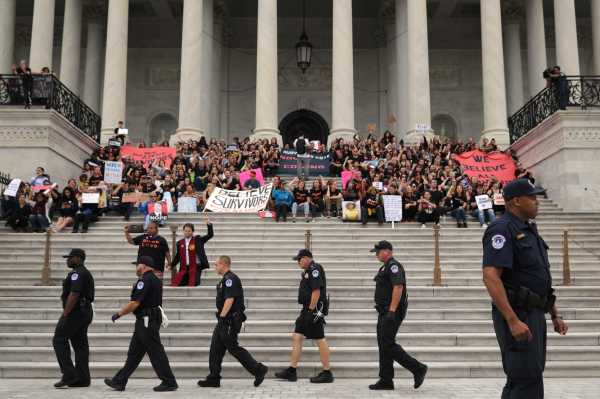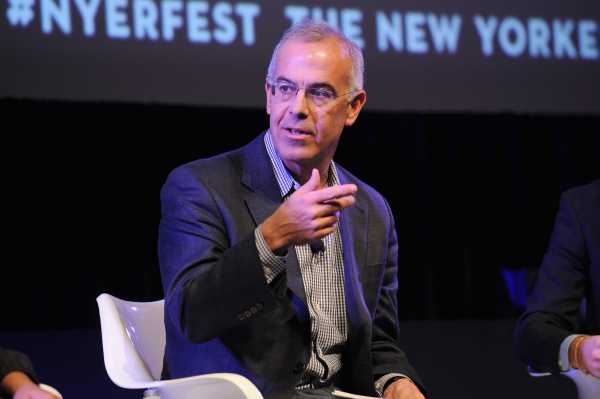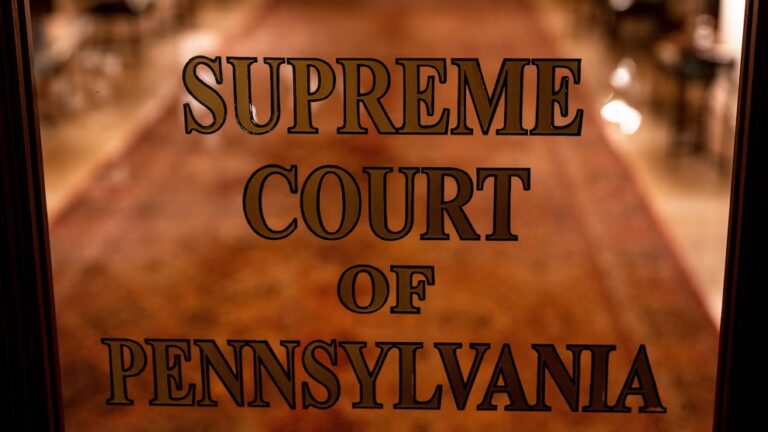
To most political observers, it seems obvious that political polarization is on the rise. The parties are becoming more hardline and their bases more ideologically unified. Partisan affiliation is now more important than ever in shaping the way Americans think about everything, even down to whom they want their kids to marry.
But a new genre of political punditry has proclaimed this something of a myth. A series of op-eds published in some of the country’s most prominent outlets — including the New York Times, the Washington Post, and the New Yorker — have argued that polarization is in fact overstated, and that there’s an “exhausted majority” in America yearning for political leaders that use centrist compromise as its guiding light.
“The majority hates polarization and wants more compromise,” the New Yorker’s George Packer writes in a representative passage. “Overwhelmingly, they are sick of the political divisions — often to the point of tears — and feel forgotten in the debate, especially as it’s distorted by the media.”
These articles all cite the same source for this claim: A new report on American public opinion by the group More In Common, an organization dedicated to fighting political polarization. The report, titled “Hidden Tribes,” sorts the American public into seven “tribes,” each of which shares an overall orientation toward politics. It finds that five of the seven tribes, representing roughly 67 percent of the American public, make up the so-called “hidden majority” fed up with the left-right divide.
“The Exhausted Majority may be the key to countering polarization,” More In Common’s analysts write. “They are frustrated with the status quo and the conduct of American politics and public debate.”
The report is, as a matter of quality, a mixed bag. It has a lot of interesting data, and has a sophisticated way of approaching polling, but its most headline-worthy conclusions are grounded in pretty questionable analysis. In particular, political scientists say, it likely overstates the significance of the seven tribes for actual voting behavior while significantly understating the importance of partisanship as traditionally understood.
“There have been many, many attempts to explain or explain away partisan polarization over the years — but the consistent evidence is that it is increasing on the mass level in the last few decades,” says Ryan Enos, a professor at Harvard University.
So while the report is by no means useless, the new centrist punditry is resting its arguments on the report’s weakest point. The fact that they’re willing to make such dubious claims speaks more to the mind of the Washington centrist than anything else: a tribe with virtually no members outside of a small elite that suffers from a deep-seated need to convince itself otherwise.
This current centrist boomlet is thus a symptom of a longer-running problem: a blindness in America’s leadership class to the true nature of the country’s divisions.
What the “Hidden Tribes” report aimed to do
At this point, the evidence that political polarization is a major threat to the American political system is pretty much beyond dispute.
Political parties, once useful gears in the functioning of the overall political system, have become barriers to its success. Both sides, but Republicans especially, have become used to using the many veto points in the American political system (like the filibuster) to block the opposing party from doing anything and seize as much power as possible for themselves. The result is the mutation of two-party competition, once a healthy part of democracy, into a kind of cancer.
“The weakening of our democratic norms is rooted in extreme partisan polarization — one that extends beyond policy differences into an existential conflict over race and culture,” political scientists Steven Levitsky and Daniel Ziblatt write in their book How Democracies Die. “And if one thing is clear from studying breakdowns throughout history, it’s that extreme polarization can kill democracy.”
The “Hidden Tribes” report aimed, admirably, to try to find solutions to this problem — places where Americans agree, which politicians could use to bring us back from the brink identified by scholars like Levitsky and Ziblatt.
The More In Common authors surveyed 8,000 Americans and asked them a series of questions about their policy preferences, values, and identity. The goal was to go beyond traditional polling and identify the deeper, more psychological roots of American partisanship.
Some of the questions they used to get this — like you agree more with the idea that people “are largely responsible for their own outcomes in life” or that “their outcomes in life are determined largely by forces outside of their control” — have obvious ideological valences. Others, like whether it’s more important for children to be “independent” or to have “respect for elders,” are more subtle. They also asked questions about people’s involvement in politics, like whether they had attended a protest in the past year, and about their sense of identity, like how much pride they had in being American.
The theory is that this sort of question can help better identify people’s foundational beliefs than simply asking them which policies they support or whom they vote for. Ideally, they could uncover some common, non-polarized ground.
“the middle is far larger than conventional wisdom suggests”
The report’s authors used people’s answers to a battery of about 60 questions to construct their seven tribes, using a statistical method called “cluster analysis.” It’s a tool designed to identify groups of individual data points, in this case people’s responses to the questionnaire, that have certain traits in common. In this case, the analysis yielded seven large groupings — each of which share certain traits, like overall political apathy or liberal moral values.
The groups are, from left to right: Progressive Activists, Traditional Liberals, Passive Liberals, Politically Disengaged, Moderates, Traditional Conservatives, and Devoted Conservatives. The middle four groups, from Traditional Liberals to Moderates, make up the so-called exhausted majority. Large percentages of people in each of the five groups shared a disdain for polarization, non-ideological opinions on complex topics, and a strong desire for political compromise.
There’s a lot of interesting data from the survey used to arrive at that conclusion. For example, the survey showed that more than 87 percent of exhausted majority members believed both that racism remaining a major problem and that considering race in college admissions is wrong. Two-thirds of the exhausted majority supports abortion rights, but around half believe that people are too sensitive about sex and gender.
The point is that even on the hot-button culture war issues fueling polarization, there’s common ground to be found. It may not be a precise midpoint between left and right — the report’s authors emphasize that it often isn’t — but rather argues that there are places where both sides could give ground in order to be more in line with the general public. This is, indeed, a not-unreasonable point.
“If the purpose of the report is to show that Americans cannot always be divided cleanly into ‘red’ and ‘blue’ camps, or that many Americans do not have orthodox liberal or conservative views, then that is surely true and consistent with decades of political science,” John Sides, a political scientist at George Washington University, tells me.
The report concludes by arguing that their report could, in theory, serve as the bedrock for an effort to turn polarization around.
“This report has shown that despite America’s profound polarization, the middle is far larger than conventional wisdom suggests, and the strident wings of progressivism and conservatism far smaller,” they conclude. “It may well take a generation, but [changes] start with understanding how we can effectively counter this polarization.”
It’s a hopeful tale: data giving us an answer to one of America’s biggest problems, one that appears unsolvable to a lot of people. But it’s missing a huge chunk of the story.
The limits of the “Hidden Tribes”

Reading the “Hidden Tribes” report, one might get the sense that this is an authoritative grouping of American public opinion — that the split between, say, Moderates and Traditional Liberals is a major natural divide in American politics. But it’s not, and treating it as such rests on a basic error about the way polarization, and indeed American politics itself, works.
The political scientists I asked about the report emphasized the limits of cluster analysis as a statistical tool. It can point to patterns and groupings in the data but can’t tell you how meaningful those patterns actually are in the real world. Someone might fit this report’s definition of being a Passive Liberal in theory but still vote no differently than a Progressive Activist in practice.
The best way to understand this is to look at reports in the past that have used similar methodologies. There are a whole lot of them, and they’ve come up with radically different groupings than the “Hidden Tribes” authors used.
“In this report, there are seven groups. Only a year ago, a Pew Research Center analysis identified nine groups. David Winston identified five groups using the VOTER Survey. Meanwhile, Emily Ekins identified five types of Trump voters [alone],” says Sides. “I personally do not think of the American public as cleanly divided into discrete groups in this fashion.”
If you dig into the numbers, you can see how arbitrary some of the category divisions are. For example, the authors say that exhausted majority members are “far more” willing likely to believe that “the people I agree with politically need to be willing to listen to others and compromise.”
But the percentage who agree among the exhausted majority (65 percent) isn’t that much larger than that of Progressive Activists (56 percent) but far outstrips the figure among Devoted Conservatives (37 percent). This would suggest that the decline in compromise isn’t a problem of two polarized camps, but rather hardline conservatives who won’t give ground to anybody else. The significance of these seven groupings depends on how you analyze the data; put differently, the seven tribes exist only because researchers created them.
There’s an even more fundamental issue. Polarization as a phenomenon depends on people’s self-identification: how closely Americans identify themselves and their social groups, like race or religion, with their political party. This is what makes polarization dangerous to American democracy. Lee Drutman, a senior fellow at New America, puts it well in a Vox essay from last September:
The key takeaway from Drutman’s analysis is that polarization is a process of conscious identification: You link being a Democrat with other core parts of your identity, like being a feminist or an atheist. It’s this tying of politics to your sense of self that makes political defeat seem like a threat to you or your group, which is in turn what makes you unwilling to even consider voting for a member of the other party.
But nobody thinks of themselves as a member of the Devoted Conservative or Passive Liberal subgroup. These are made-up categories for analytic purposes, not identities around which anyone is organized. Politicians can’t appeal to the exhausted majority because it does not exist as an identity group.
Similarly, politicians can’t appeal to the value of compromise in the abstract and hope to win over voters because people don’t actually act on that part of their belief system. They may tell pollsters and focus groups that they want compromise, but when it comes time to donate money or vote, their partisan and social identities lead the way. And those are driving them, inexorably, toward picking one party or another — toward polarization.
“It is a lot easier for us to polarize and, thus, shape opinion and behavior around a simple us versus them — in other words, two distinct groups — than it is around seven,” Enos, the Harvard scholar, tells me.
This makes it really, really hard to use the categories set up in the “Hidden Tribes” report to develop solutions to polarization in the way their authors want. Polarization is not merely a matter of people disagreeing on specific political issues; it’s about the very foundations of a shared American social reality fracturing.
That can’t be fixed by politicians reaching out to the other side, or advocating policies that are broadly popular with the American public. I’m not sure what the solution is, but the best available research suggests it definitely isn’t that.
The centrist mind

The “Hidden Tribes” report authors are quite careful to say that their report doesn’t offer simple answers to polarization, or the big divides over identity concerns like race that help fuel it. “This report,” they write in the conclusion, “is not intended to provide a blueprint.”
But that didn’t stop a coterie of centrist pundits as treating it as such, as a kind of skeleton key unlocking the American electorate and showing the way to fix the country’s problems. These efforts say more about the writers, and a certain kind of elite mindset, than it does the true nature of American politics.
Some claims to this effect are truly grandiose. “A shrewd politician could take the findings of ‘Hidden Tribes’ and create a winning constituency by appealing to the Exhausted Majority,” writes Packer, the New Yorker correspondent.
Yascha Mounk, a lecturer at Harvard, used the report’s typology to pen an extensive strategy memo for Democrats at Slate.
“Understanding these tribes is the key to understanding what a viable electoral strategy might look like,” he writes. “‘Hidden Tribes’ shows that there really is a large part of the population that is open to persuasion … neither moderates nor passive liberals have much appetite for rhetoric that casts race, gender, or sexuality as a fundamental dividing line of American politics.”
Note how far these arguments go beyond the data and analysis in the report itself. Nowhere in the report do they claim that their research can be exploited for immediate electoral gain. In fact, such a claim is almost certainly false, for the reasons discussed in the last section: You can’t overcome the deep sources of two-party polarization with lofty political rhetoric and centrist policy positioning. Yet that’s what Packer and Mounk seem to be arguing — sloppy work from two analysts who are generally quite sharp.
Similarly, David Brooks uses the report to suggest that America is divided between “two extreme cults,” and the exhausted majority is yearning for a political party who will tell them a story “totally unlike the two dominant narratives today.”
But the report makes no claims whatsoever about where the leadership of the two major parties land. It doesn’t say whether mainstream Democrats talk more like Progressive Activists or Passive Liberals.
Indeed, as New York magazine’s Eric Levitz points out, Democrats actually are the party of compromise. Barack Obama’s first presidential run was premised on the idea that he could unify the country under a post-partisan banner. This didn’t work out as planned — Obama’s attempts to compromise with Republicans were repeatedly rebuffed — and polarization has only gotten worse in the years since his arrival on the scene. While there’s still a meaningful contingent of moderate Democrats in Congress, the moderate Republican has essentially gone extinct.
Centrist pundits have also deployed the report to attack one of their favorite bugaboos, the left’s allegedly out-of-control political correctness. “The More in Common report confronts us with a disturbing reality,” writes Charles Lane in the Washington Post. “We are a long way from the ‘double morality’ of Eastern Europe, but we are, apparently, living among many millions of citizens who routinely lie or dissemble about their political opinions out of fear.”
Indeed, the report does find that 80 percent of Americans dislike “political correctness.” But the questionnaire never actually defines “political correctness,” which is typically used as a term of abuse. And the data allegedly showing that people self-censor, which Lane strangely compares to communist tyranny, is far more caveated in the actual report:
This suggests that, far from being a neo-Stalinist dystopia, the contemporary United States is a place where lots of people care about offending others and take care to avoid it. One way to describe that is “self-censorship”; another is simple politeness. Moreover, if the thing some people are not expressing is their negative opinions about entire groups of people, like African Americans and Muslims, it’s far from clear that this self-censorship is a bad thing.
These pundit descriptions of the “More In Common” report share an error. They take a questionable analysis of the nature of American public opinion, one specifically designed to speak to the reality of polarization, and apply it directly to two-party competition. They also draw a similar conclusion: that the problem is with both of the major political parties being too extreme, and that some kind of compromise by party leadership can save the republic.
But the report doesn’t support any of those conclusions. In fact, it hardly speaks to them at all.
Instead, this interpretation reflects the longstanding centrist position that America’s political problems stem from a lack of compromise on “commonsense” political priorities. During the Obama administration, the centrist cause célèbre was the national debt, with elites urging the two parties to balance America’s budget. Democrats were urged to cut social spending and Republicans urged to raise taxes — despite the fact that Democrats had balanced the budget under Clinton, and that Bush’s tax cuts and wars were the principal causes of the ballooning deficit.
Today, identity issues have taken a similar role. The center sees the problems of American politics, correctly, as being a divide over identity. But their solution is some kind of compromise between Trump’s direct appeals to racism and Democratic “identity politics,” as if those two things are equal and opposite evils. They are not.
Moreover, there’s little reason to believe the silent majority of Americans are just waiting to be won over by one or the other party embracing milquetoast centrism. The More In Common report isn’t such evidence, and the deep evidence we have on how polarization works suggests that no such evidence is likely to emerge. But the Beltway centrist needs such evidence to exist.
That’s not to say there’s something pathological about the writers on display here. But their analyses of this report suffers from a kind of wishful thinking we’re all prone to: seeing reality as we want it to be, rather than how it is.
Sourse: vox.com






